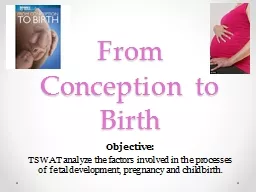PPT-Management of 1 st Trimester
Author : karlyn-bohler | Published Date : 2018-03-22
Bleeding Jen Phillips MD 452017 Thanks to Dr Nicole Yonke and baby Anya Objectives Understand how to address early pregnancy bleeding and pregnancy of unknown
Presentation Embed Code
Download Presentation
Download Presentation The PPT/PDF document "Management of 1 st Trimester" is the property of its rightful owner. Permission is granted to download and print the materials on this website for personal, non-commercial use only, and to display it on your personal computer provided you do not modify the materials and that you retain all copyright notices contained in the materials. By downloading content from our website, you accept the terms of this agreement.
Management of 1 st Trimester: Transcript
Download Rules Of Document
"Management of 1 st Trimester"The content belongs to its owner. You may download and print it for personal use, without modification, and keep all copyright notices. By downloading, you agree to these terms.
Related Documents














